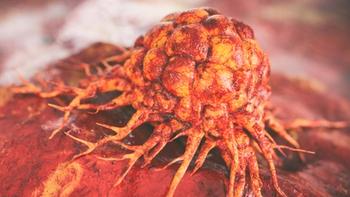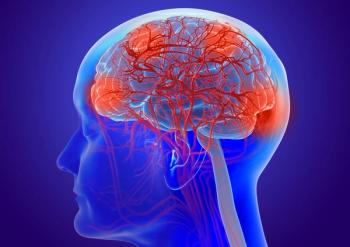
- ONCOLOGY Vol 12 No 2
- Volume 12
- Issue 2
Carmustine Wafer to Be Studied in Newly Diagnosed Malignant Glioma
Rhone-Poulenc Rorer recently announced the start of a phase III clinical trial of its prolifeprosan with carmustine implant (Gliadel Wafer), in conjunction with surgery and radiation, in patients newly diagnosed with malignant glioma. The purpose of this study is to confirm the results of an earlier, small phase III trial showing that the carmustine wafer offers a significant survival advantage over placebo when used with initial surgery for malignant glioma.
Rhone-Poulenc Rorer recently announced the start of a phase III clinical trial of its prolifeprosan with carmustine implant (Gliadel Wafer), in conjunction with surgery and radiation, in patients newly diagnosed with malignant glioma. The purpose of this study is to confirm the results of an earlier, small phase III trial showing that the carmustine wafer offers a significant survival advantage over placebo when used with initial surgery for malignant glioma.
Approximately 200 patients will be enrolled in this randomized, double-blind, placebo-controlled study to be conducted at 38 sites in 12 countries. Eligible men and women between the ages of 18 and 65 years will be assigned to receive surgically implanted biodegradable polymer wafers with either carmustine or placebo. In addition to initial surgery for tumor removal, all patients will be treated with radiation therapy. Patient survival at 12 months is the primary end point.
We are conducting this trial to confirm that Gliadel prolongs survival in patients who receive it after the initial surgery for newly diagnosed malignant gliomas, said Dr. Gary T. Shearman, Rhone-Poulenc Rorer Senior Vice President, Drug Development. The early findings already suggest that Gliadel demonstrates a favorable survival benefit to patients with high grade gliomas.
Results of Earlier Phase III Study
The earlier randomized, controlled phase III clinical study was conducted in Europe in 1992 and involved 32 patients. Survival rates at 1 year were 63% with the carmustine wafer, as compared with only 19% with placebo. The local side effects observed in patients in this study included healing abnormalities, brain edema, and local infections. These effects are consistent with the side effects reported in clinical trials of the carmustine wafer in patients with recurrent glioblastoma multiforme.
According to the Central Brain Tumor Registry of the United States, there are approximately 35,000 primary brain tumors diagnosed in the United States each year, and glioblastoma multiforme is the most common type.
The carmustine wafer is currently marketed in the United States for use as an adjunct to surgery to prolong survival in patients with recurrent glioblastoma multiforme for whom a second surgery to remove the tumor is indicated.
Articles in this issue
almost 28 years ago
Quantitative Assay Provides Effective Method for Monitoring Bladder Canceralmost 28 years ago
Extension of Human Cell Life-Span Reportedalmost 28 years ago
Abnormal DNA Structures May Hold Key to Early Cancer Detection, Treatmentalmost 28 years ago
SGO Clinical Practice Guidelines: Introductory Remarksalmost 28 years ago
ACS Issues Action Proposal on Prostate Cancer in African-Americansalmost 28 years ago
HMO vs Fee-for-Service Care for Breast Canceralmost 28 years ago
Revised Manual on Radiation Oncology Nursing Availablealmost 28 years ago
ONS Publishes Manual on Psychosocial Aspects of Oncology Carealmost 28 years ago
Cigarette Smoking Among Adults-United States, 1995Newsletter
Stay up to date on recent advances in the multidisciplinary approach to cancer.





![According to John Henson, MD, “What we need are better treatments to control the [brain] tumor once it’s detected.”](https://cdn.sanity.io/images/0vv8moc6/cancernetwork/e0d29c38bb732429ae370e4ef7d1829a10c96446-2992x1684.png?w=350&fit=crop&auto=format)


























































































